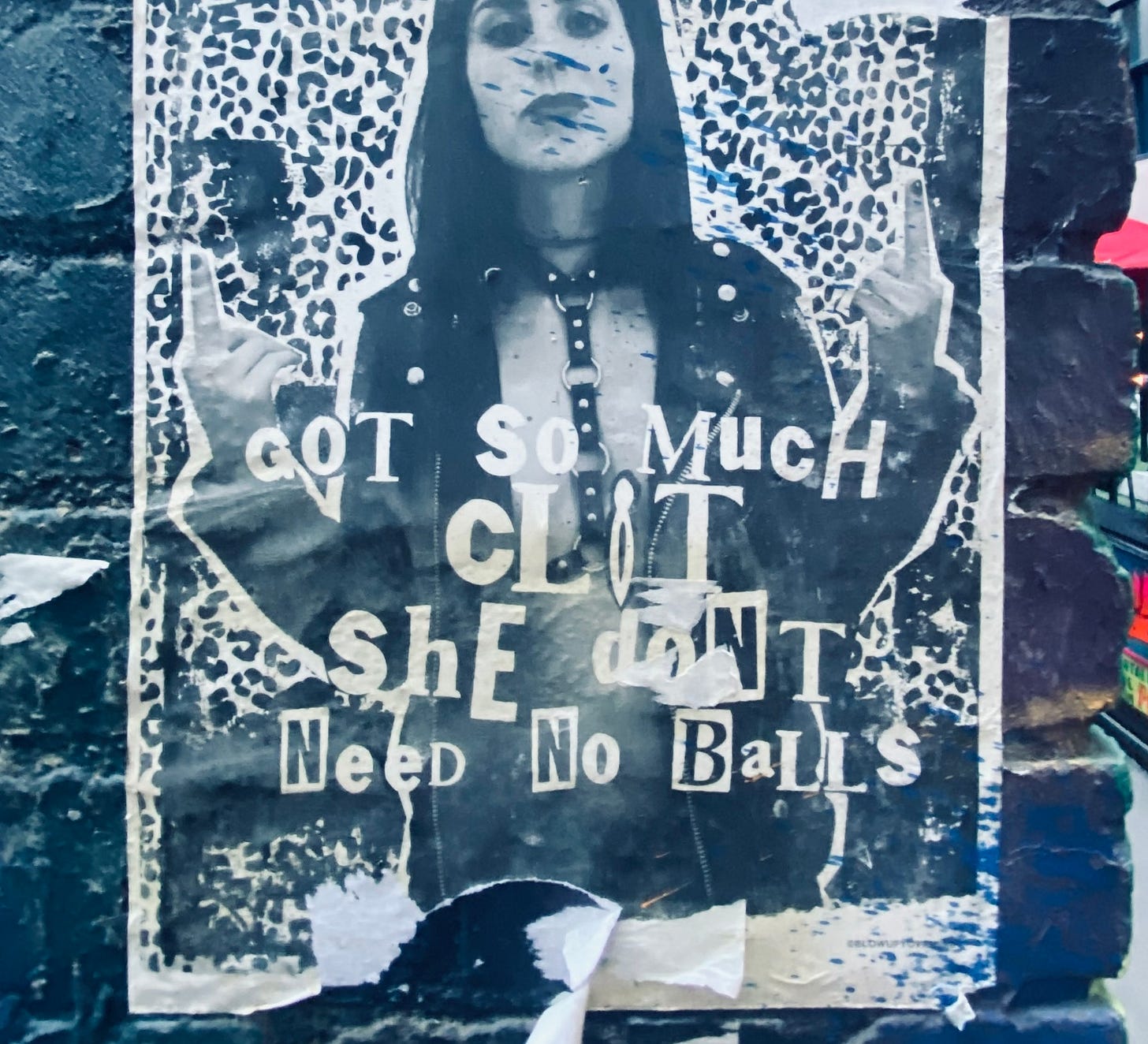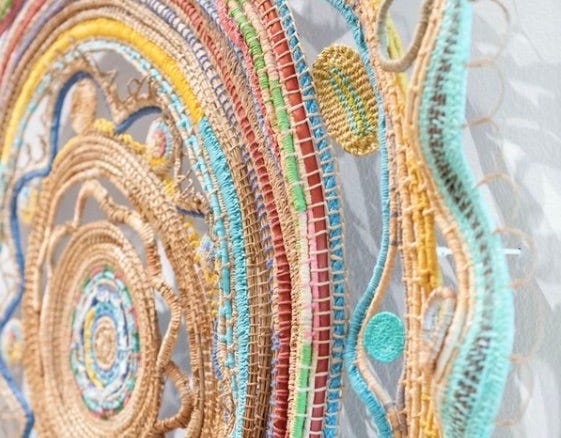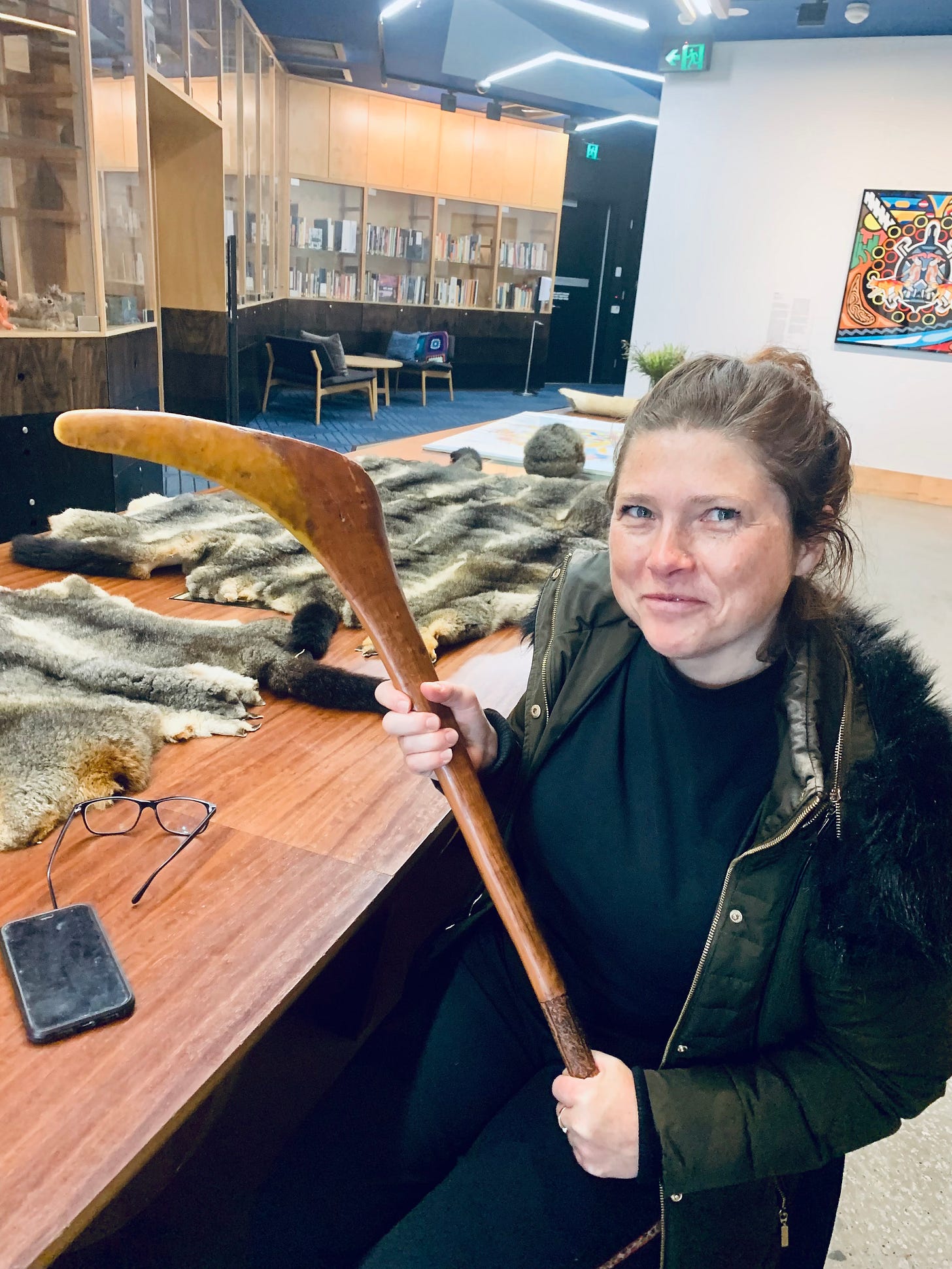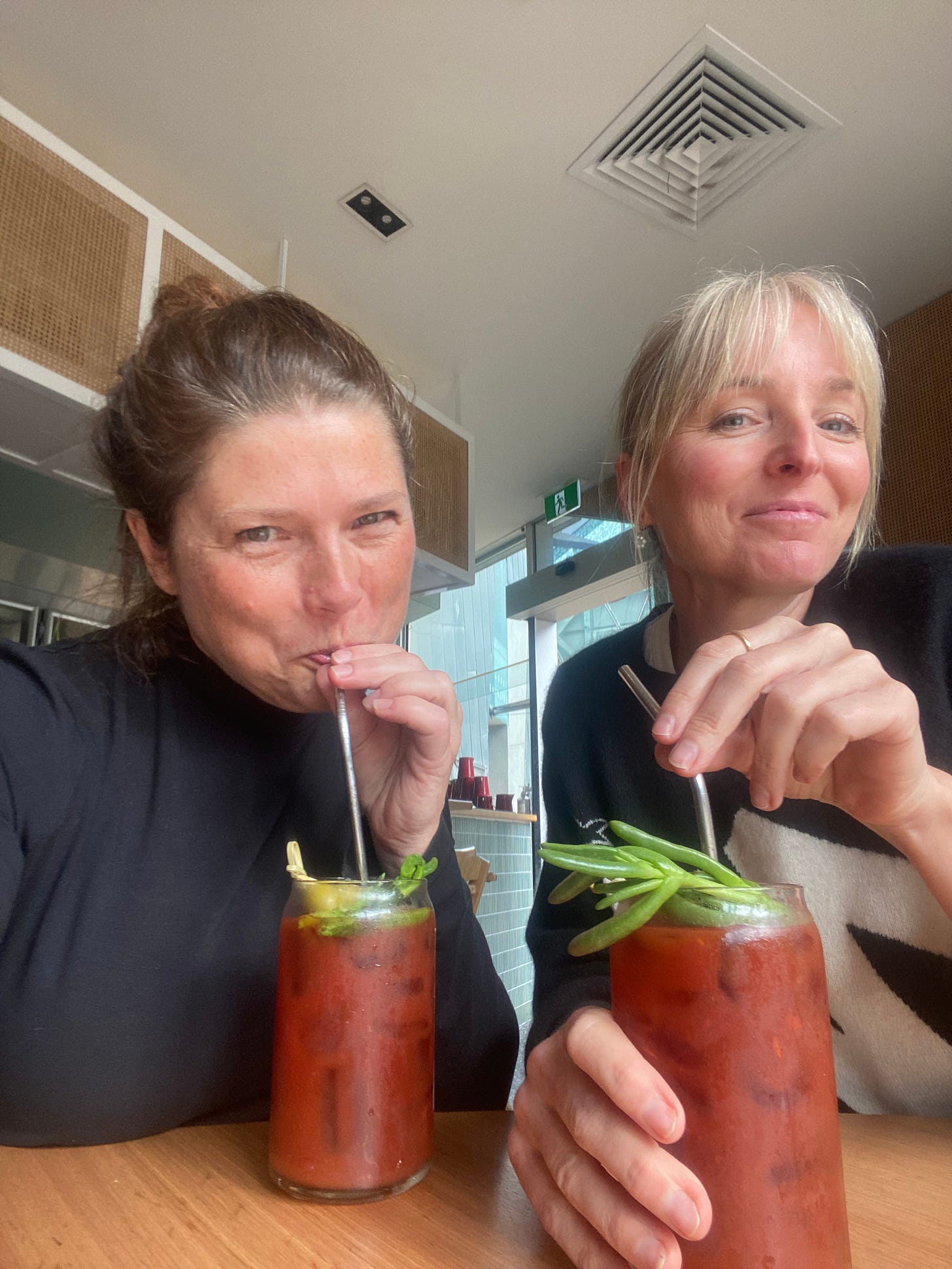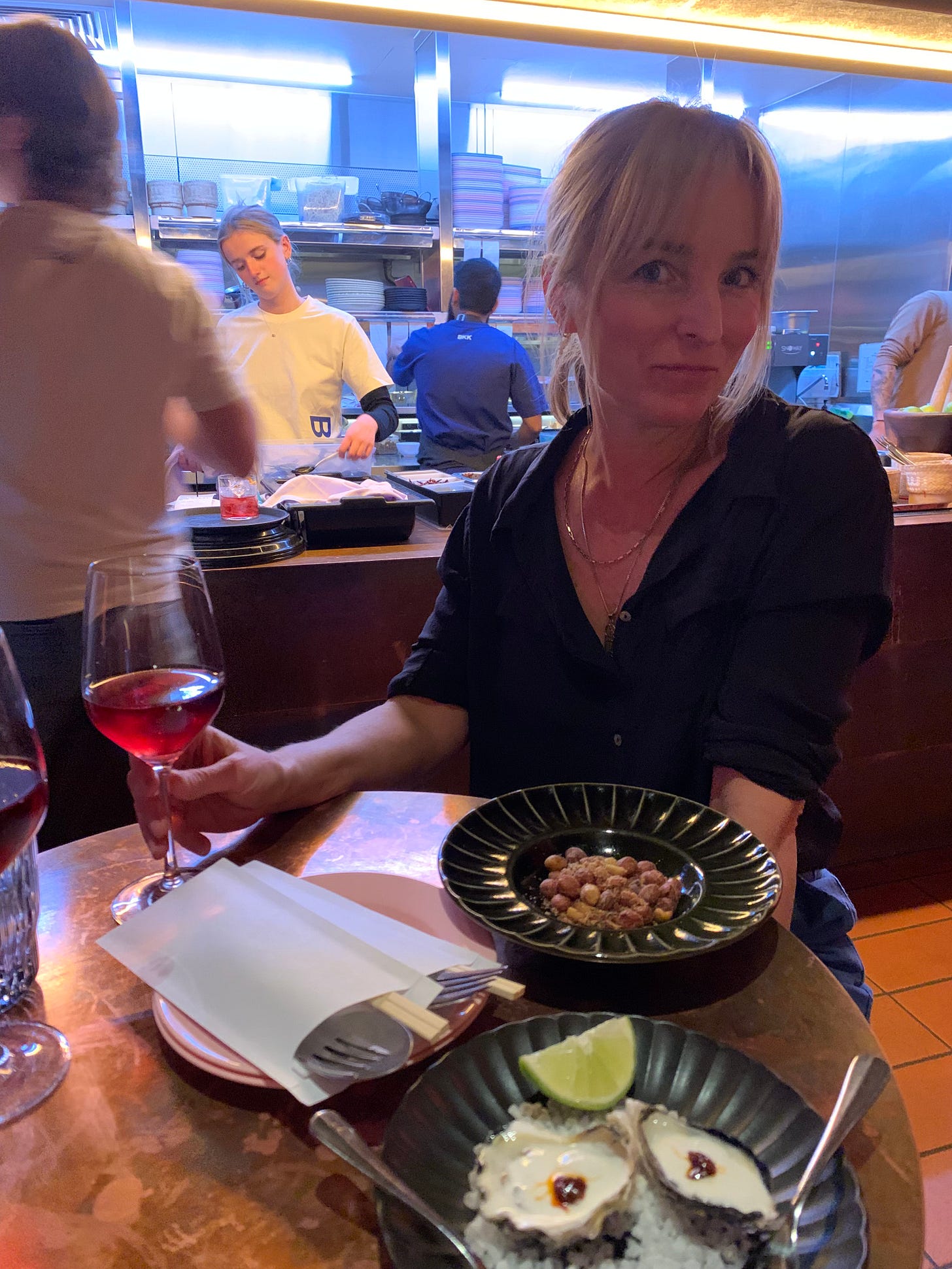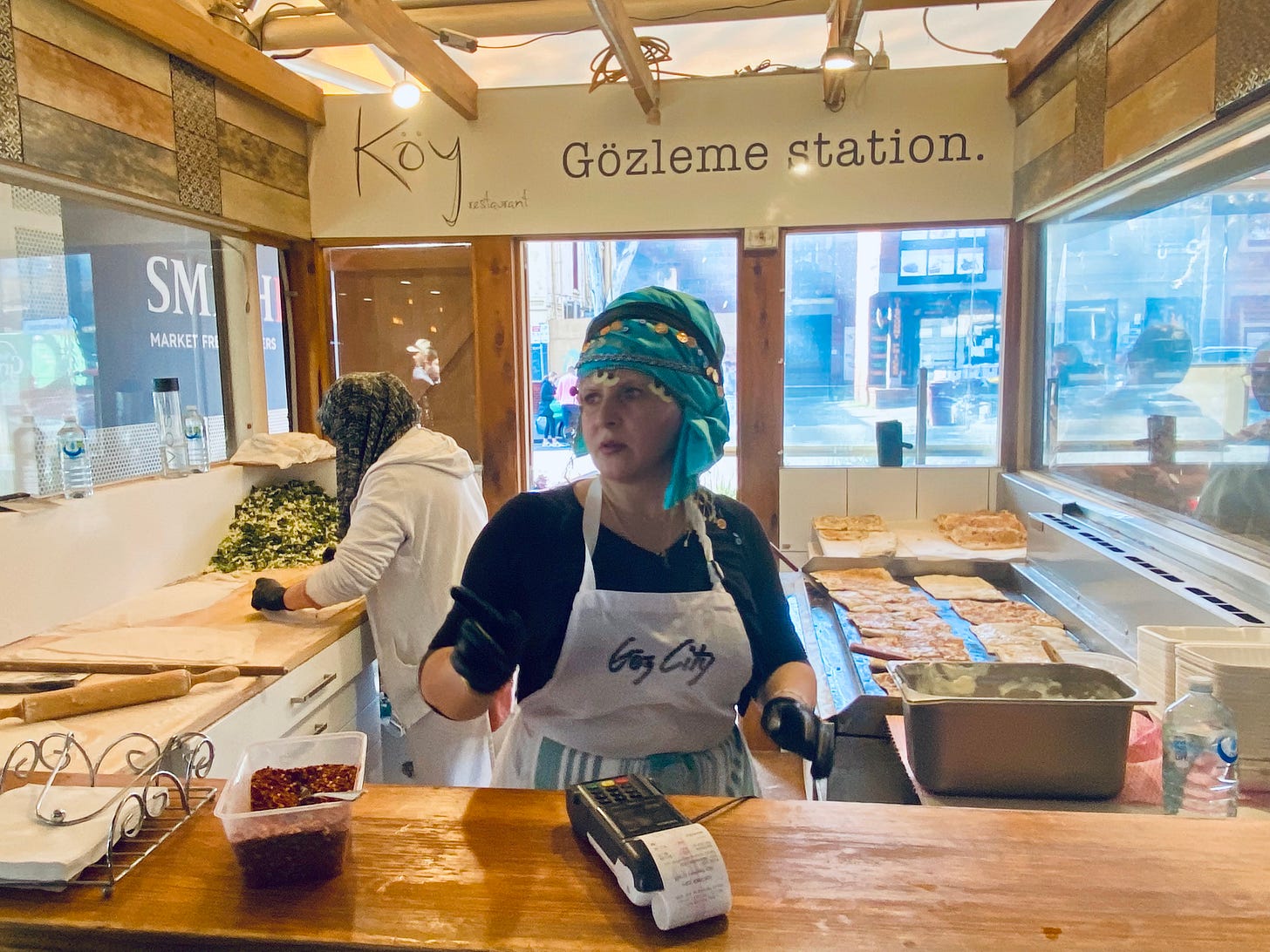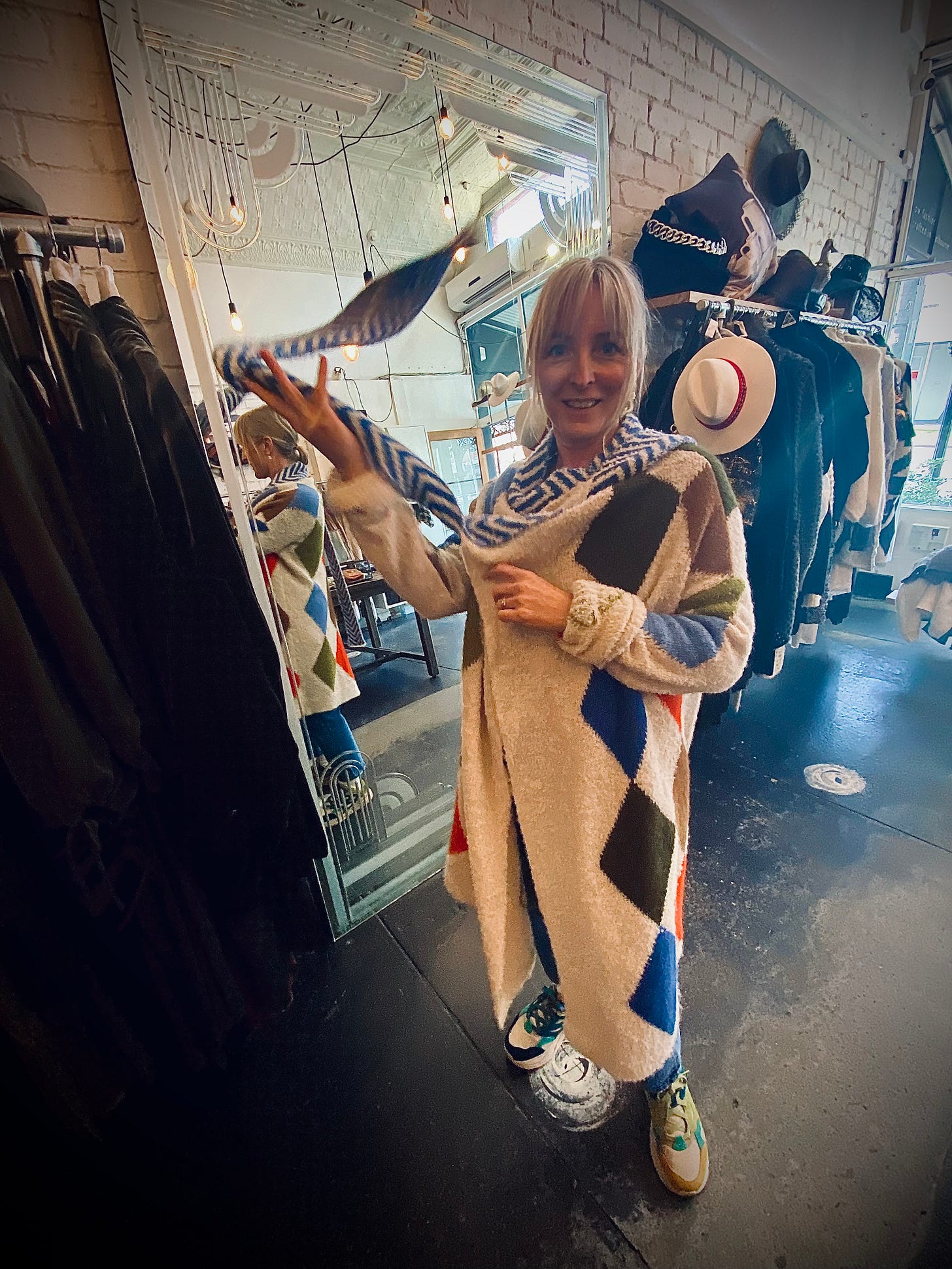Aboriginal art, feminist restaurants and menopause dressing Down Under
What Rhonda learnt about diversity and difference on a girls’ getaway in Melbourne
I’m transfixed by Ngugi-born Elisa Jane Carmichael’s A Place to Share. This circular work hanging in Melbourne’s Ian Potter Centre: NGV Australia has been woven from ungaire (Queensland swamp reed), pandanus, wool, cotton yarn, raffia, discarded sea ropes, and even Red Emperor fish scales.
It’s fascinating to me how such delicate and even ephemeral natural materials and marine detritus have been upcycled into something solid and lasting thanks to an intricate, painstaking weaving technique – one traditional to Indigenous women in south-eastern Australia.
And also how it has been transformed into something culturally meaningful: the work represents a place of coming together. From the sign on the gallery wall, I learn that First Nations women such as Elisa Jane Carmichael often sit in a circle to connect and create – to share culture and knowledge.
I'm no politician or diplomat or preacher (despite being a Libran :-), but I know that the acceptance and hopefully even the celebration of difference are the only way forward for humanity. That we should encourage diversity both in our cultures and societies and within ourselves. (Philosopher et cuisiner : un mélange exquis is a great read about the need for societal and personal hybridisation.)
So I was devastated when, last year, an Australian referendum rejected the proposal to recognise First Nations peoples in its constitution by establishing a body that would advise its parliament on Indigenous issues. Along with the shattering developments in the Middle East, it made me fear for a world where our differences seem to be becoming more fiercely entrenched and even less tolerated than they have been in the past. We seem to be going backwards.
My visit to the Ian Potter Centre – the world's first major gallery dedicated exclusively to Australian art – was part of a three-day girls’ getaway in Melbourne during a wider trip to Australia. Everything about this trip spoke to me about the value of connection and the sharing of different viewpoints and backgrounds. My 15-year-old son was not only reunited with his best friend, who had moved to New South Wales during the pandemic, but made also new friends from an array of cultural backgrounds during our stay.
Meanwhile, I re-bonded in Melbourne with my friend Nicole, whom I hadn’t seen since she moved back to Australia 10 years before. The pandemic had taught us to finally stop deferring plans to meet but just bloody well get on with it.
If Australia has failed to recognise its First National peoples in its constitution, I did note some positive signs of recognition of the country’s history. The dual-naming of cities and other selected locations (ie the use of the current term alongside the traditional Aboriginal name) – one that began a while ago with Uluru/Ayer’s Rock in 1993 – is picking up pace, as is the practice of ‘Acknowledgment of Country’ (spoken or written declarations of recognition of the original owners of a land/region). But change and progress does need to be more than lip service…
In Melbourne, Nicole and I also visited the Koorie Heritage Trust, which was set up to protect, preserve and promote the living culture of the First Peoples of south-eastern Australia – the region that corresponds roughly with today’s southern New South Wales and Victoria. Its fascinating collections embrace everything from eel traps and possum-skin cloaks and carved emu eggs to boomerangs and canoes.
Afterwards, in the same building as the Trust (in Federation Square, on the land of the Wurundjeri People), there was more cultural enlightenment and sharing in store – this time in culinary form. Mabu Mabu/Big Esso is a unique venue founded by female chef Nornie Bero from the Meriam People of Mer Island in the Torres Strait, who has made it her mission to put indigenous ingredients, including crocodile, kangaroo tail and plants such as pepperberry, Warrigal greens, sea parsley, saltbush, wattleseed and karkalla, in kitchens all over Australia. She also insists on sourcing from environmentally conscious and/or First Nations, queer-led and women-led producers wherever possible.
But of course, inclusion takes other forms too, and we were heartened by two other feminist-minded restaurants in Melbourne. Farmer's Daughters, where we had one of the most memorable meals of our lives (how can simple food taste so damn good?!) is named in homage to the powerful females behind the farms and other agricultural businesses of Gippsland and the rest of Victoria, and an acknowledgment of the huge role they’ve played in the development of farming in Australia as a whole. It uses only produce sourced from the rolling hills, mountains, rivers and beaches of the surrounding Gippsland region.
Then there’s HER Bar, this time named in recognition of the women who used to work in the heritage-fronted former cigarette factory that it occupies. In fact, the original full intention by its owners was to have it fully staffed by women, too, but that proved unworkable. (That was fine by us – the male waiting staff are more than easy on the eye!)
After a divine dinner of oysters, tom yum peanuts, papaya salad and green jackfruit curry, we found ourselves lured into checking out HER’s hidden-away Music Room. This vinyl-walled mini nightclub turned out to be another hotbed of difference – one where we felt like we dissolved in a sort of loved-up, paganistic rite led by an ecstatic DJ. As I danced and drank and laughed and flirted with men and women of all different ages, I felt entirely ageless and very, very free.
It must have been something in the air, but in South Melbourne Market, where Nicole and I spent our last morning together browsing the Sunday-morning produce stalls and street-food outfits, it was the passionate women producers and cooks who stood out to me, selling everything from gözleme to banh mi, from sfogliatelle to sushi. The whole place is a joyful, madly colourful and very delicious mish-mash of Turks, Vietnamese, Italian, Japanese and others, all working passionately check by jowl.
Last up – and a particular treat for Nicole who as well as being a super-talented food stylist has her own sustainable homewares label working in collaboration with Papua New Guinea weavers – was a visit to some of Melbourne’s best independent and ethical fashion producers. These designers and shopkeepers support both local women (through the likes of crafting workshops that provide a calm space for anxiety suffers) and overseas providers: jeweller Angela Clark, for instance, mentors a duo of Ethiopian girls making pieces from materials including recycled bullet cases.
These artisans can be visited on a Fashion by Foot walking tour of the boho-chic neighbourhood of Carlton – the brainchild of Donna Cameron, who has a particular interest in helping women – especially those over 40 and/or menopausal – track down clothes they otherwise wouldn’t.
Donna’s philosophy is that discovering what suits you, or rediscovering it as your body changes over time, has another huge benefit. Shopping mindfully, she says, supports independent producers because you avoid the lure (and the careless purchases) of fast fashion. And who can disagree with that, and who on Earth wants to look the same as anyone else? Vive la différence!
A version of this piece first appeared in Platinum magazine in collaboration with Visit Victoria.


